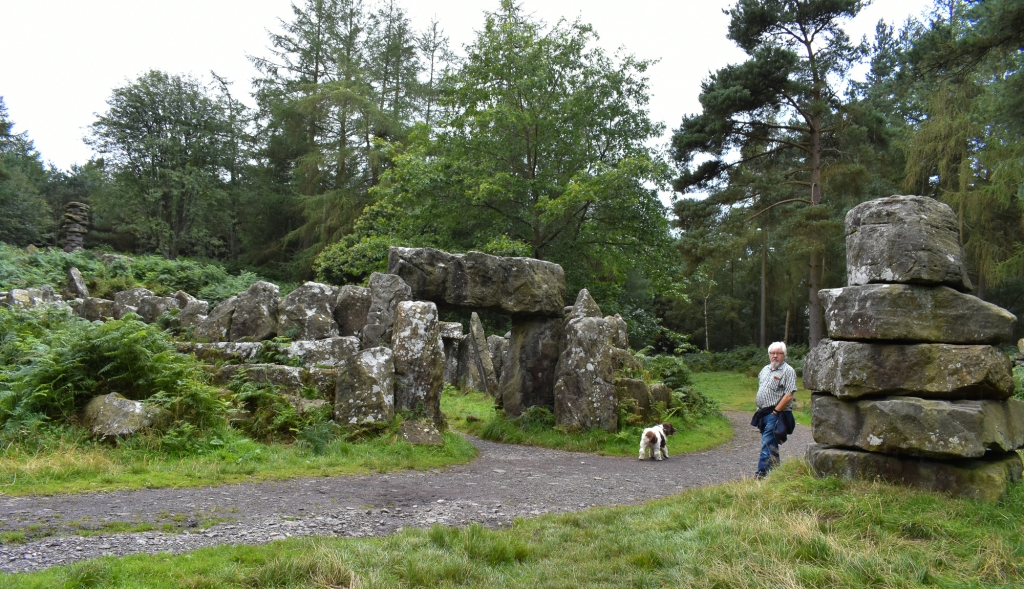
This is a short introduction to a hidden curiosity, with information and some pictures to help anyone intending a visit and to inform those who’ll never make it to this charming spot. The quirky folly known as the Druid’s Temple sits on the Swinton Estate, which lies just over 11 miles (17.7 km) northwest of Ripon in the Yorkshire Dales, England. The nearest village of note is Masham, where the famous Theakston and Black Sheep ales and beers are brewed. Here’s a link to a map, because this place is not easily found.
Valerie and I took a trip here with my brother Steve and his wife, Ali, whilst staying in their house in another Dales village. Just as well they took us, as we’d never have found the place on our own! Isolated is the appropriate description. But worth the effort.
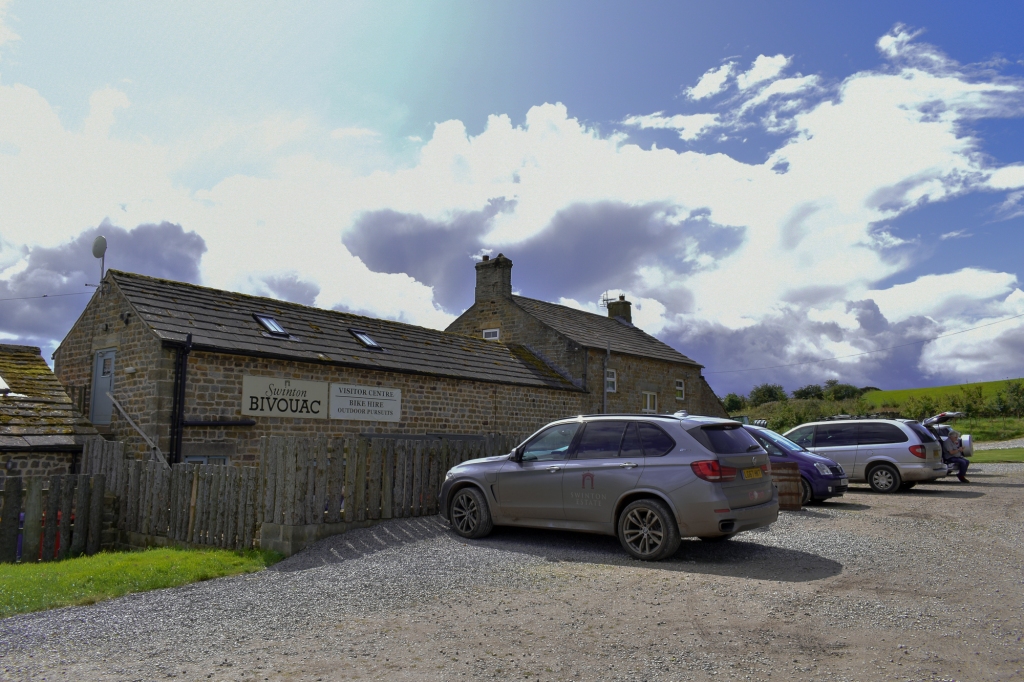
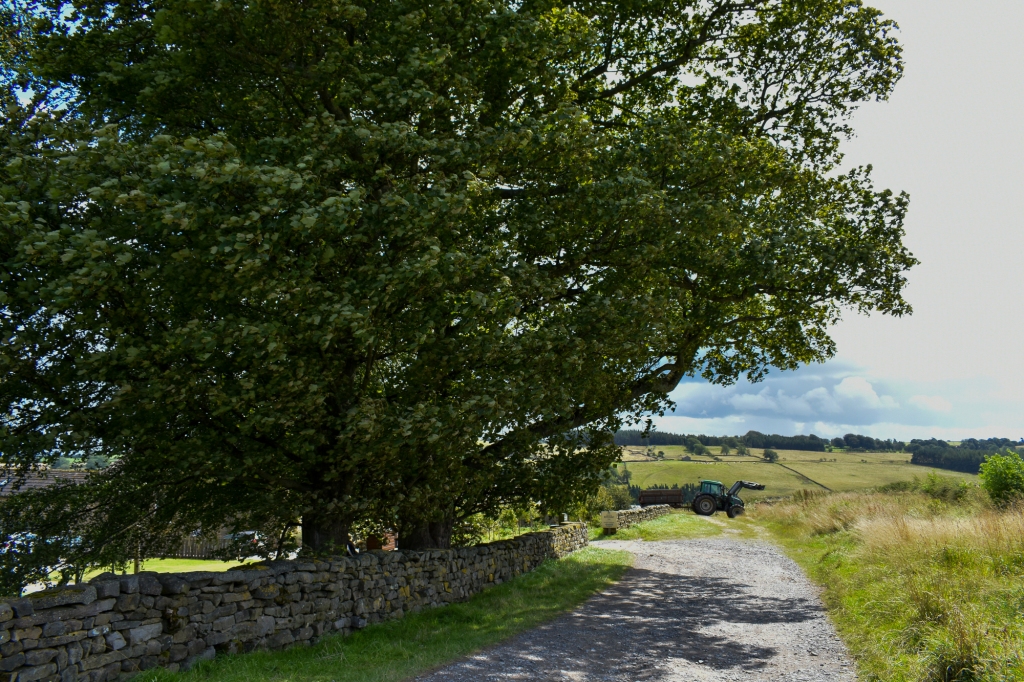
The ‘Temple’ itself is only one feature of the extensive estate and of the specific spot where it’s located. It’s an imagined representation of a Druid temple and closely resembles some other genuine pagan sites. But it was actually constructed in the late 1700s by the then owner of the Swinton Estate, William Danby. It was supposedly built by estate workers returning from the Napoleonic Wars, though the dates don’t readily tie in with that claim. Nevertheless, it was built around that time. It’s also possible William Danby, in common with other wealthy landowners of the period, paid a ‘hermit’ to live in the structure for a number of years. Such ‘curiosities’ leant an air of authenticity to these vanity constructions for the landed gentry.

Along with the stone circle and some other stone monuments spread through the woodlands, you’ll find a campsite with luxury Yurts, cycle trails, and 50 miles (80.5km) of walking paths, as well as a small shop and rather pleasant eatery, the Swinton Bivouac Café.

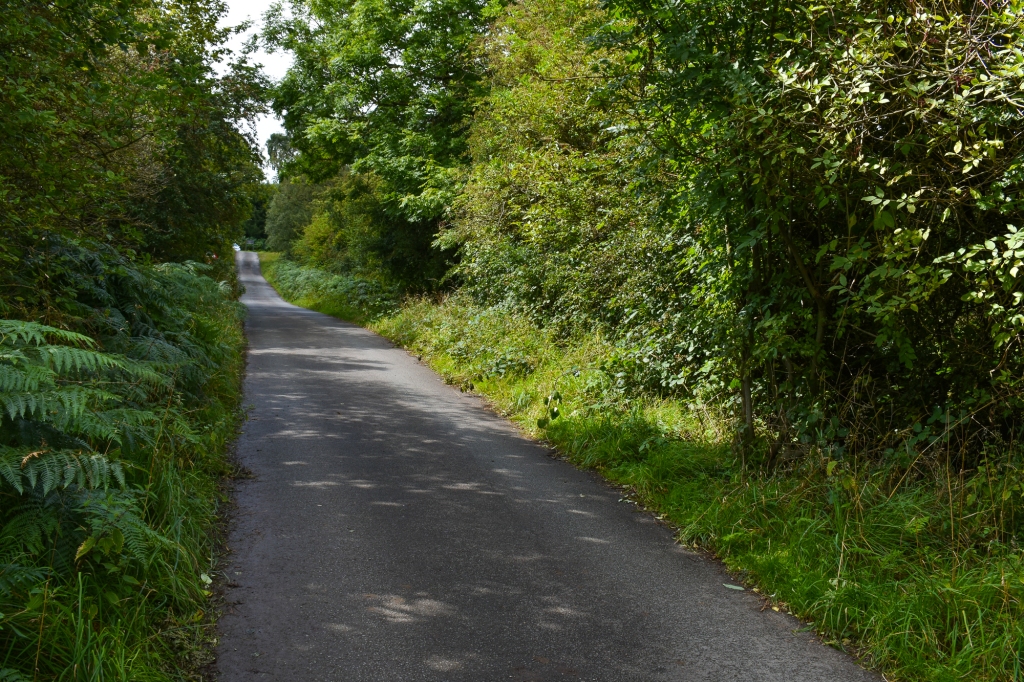

The attraction is reached along a maze of narrow, country roads that eventually lead to a car park beside the building used as a bivouac and next to the field used for camping and the Yurts. There’s a sign suggesting you pay for parking in the ‘hut’, which turns out to be a small covered notice box containing an honesty box and some literature. There are toilets on the site.
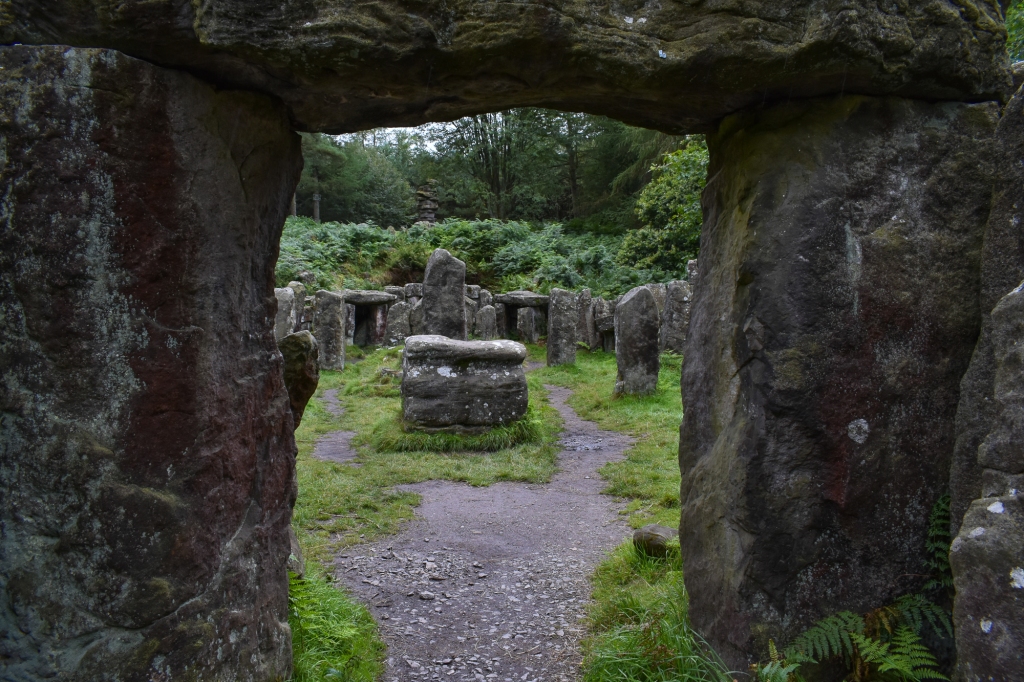
You walk along a gravel track and a short length of narrow tarmac road through another small car park (not intended for public use) to reach the entrance to the woodlands. From here, the walking is along grassy paths, muddy in parts when wet, so good footwear is advised, though, in dry weather you’d be fine in town shoes or even sandals.
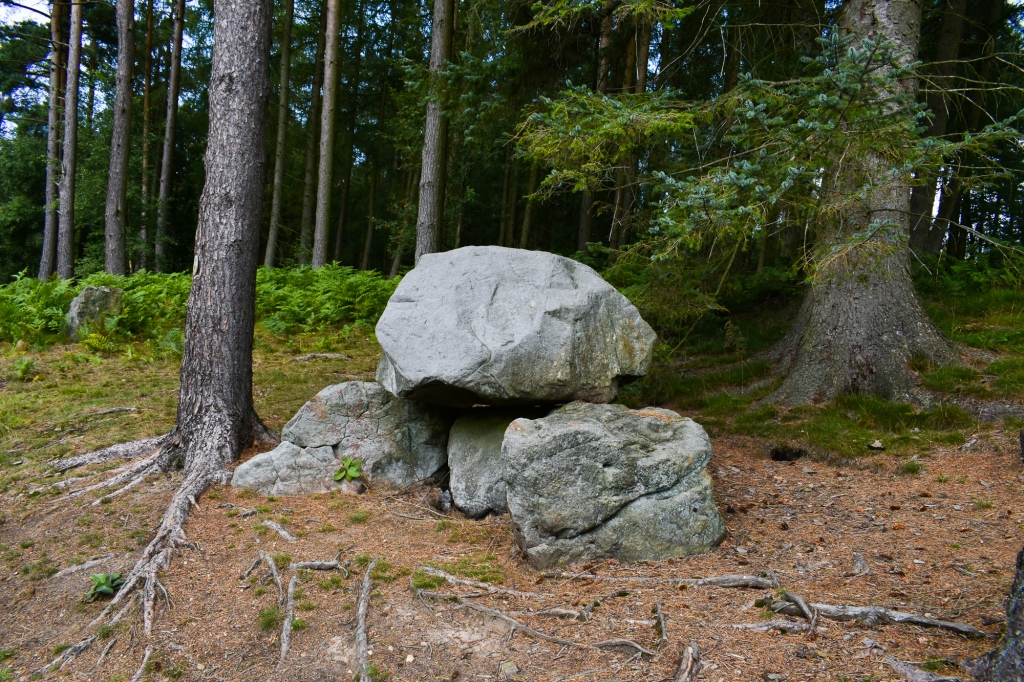
We arrived in bright sunshine, but being Yorkshire in mid August, the weather was changeable and we didn’t hang onto the clear sky for long.

The woodland is mixed conifer and broadleaf, with some unusual specimens, if you know what to look for. We came across an oak tree with very large leaves. There are over 600 species of oak. Steve took a photograph with his phone and searched online to discover it was probably a Turkey Oak, a species no longer imported due to the fact it hosts the gall wasp, which damages native species.
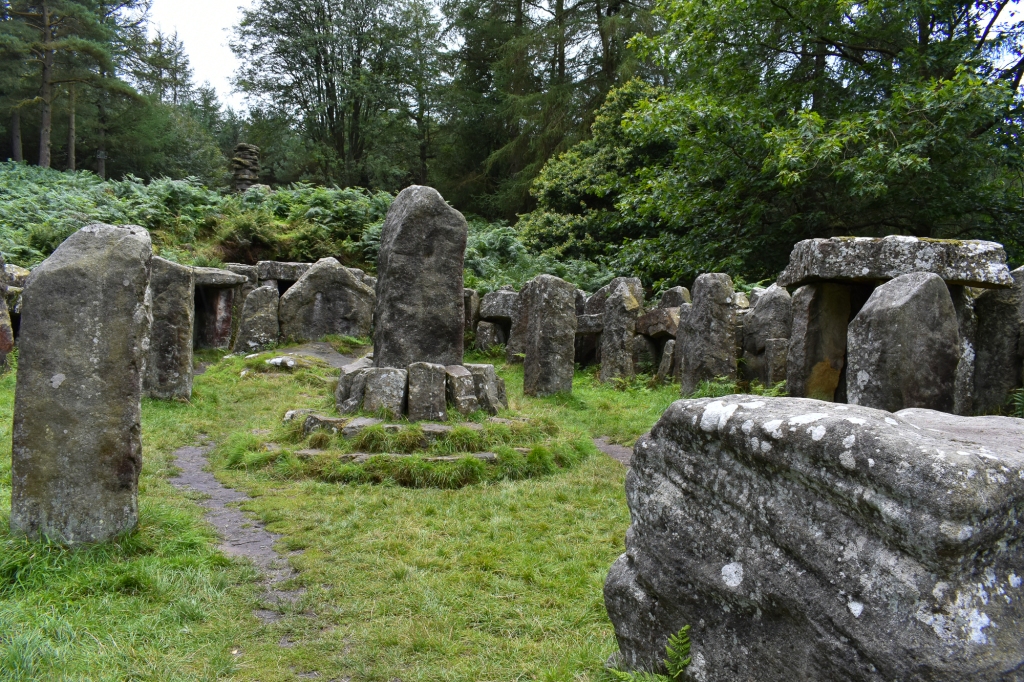

The stone circle appeared as we rounded a corner in the track that follows the edge of the woodland. It’s quite a sight, and time has weathered it to make it appear more authentic. Inside, there’s a stone that could be considered an altar, and to one side lies a small construction that looks like the hermit’s habitation. We sheltered inside during a sudden rainy squall. Outside this lies a large stone ‘table’ with smaller stones arranged close enough to act as seats: perhaps a place where the hermit could entertain guests? Mind you, what he’d feed them isn’t clear. And it’s more likely the ‘table’ was used by parties from the big house for picnics.

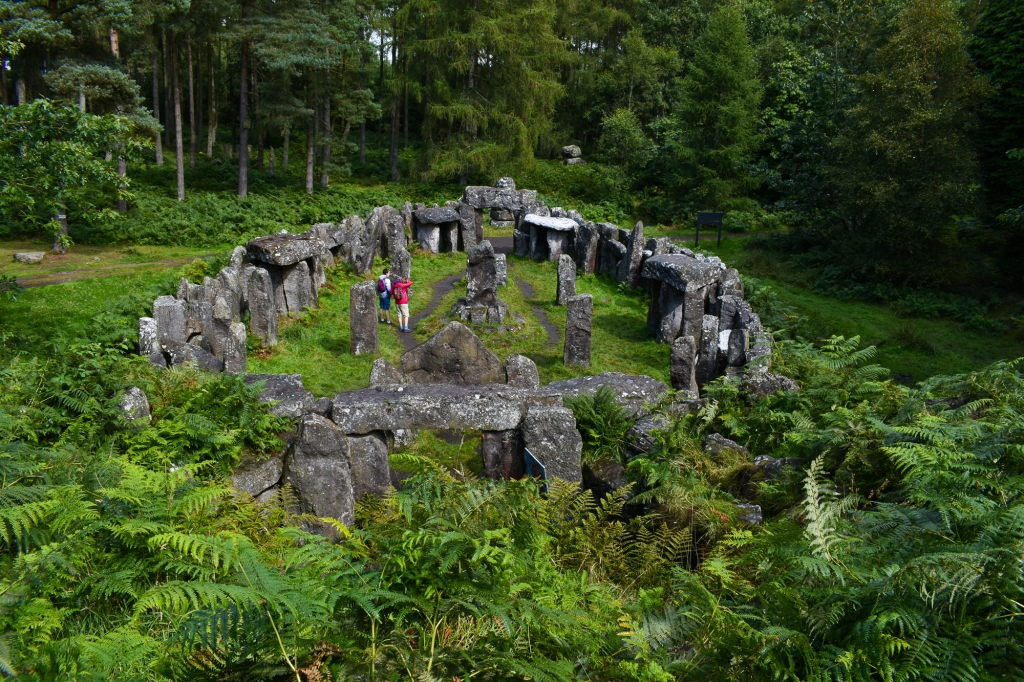
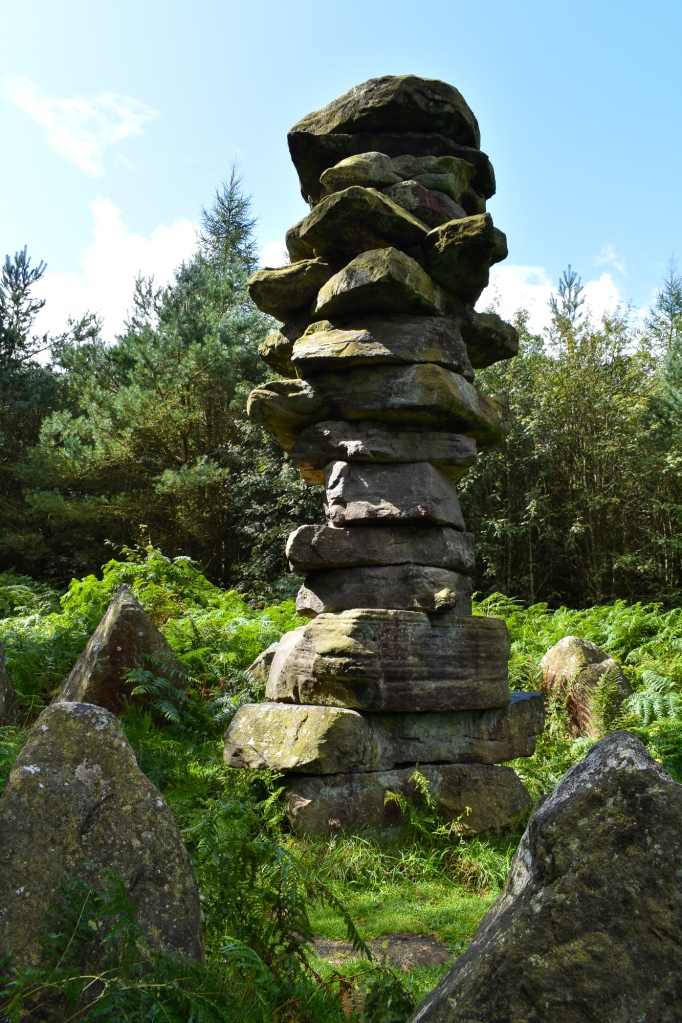
There are standing stones within, and an entrance and exit in the form of roofed gateways. Beyond the structure stands a large pile of stones about 12 feet (3.5m) high. A rough obelisk, its purpose is unknown, or at least not recorded. But it forms an interesting focal point as you walk the woods.




We returned to the car park, and since it was the right time of day for a snack (is there a wrong time?) we went into the café. This is one of the most happily located small eateries I’ve been in, with open views across the local dales. If you wish, and the weather permits, you can sit at one of the picnic tables outside and fully indulge in connection with the natural landscape. A small slope leads down to an area with play equipment for children.
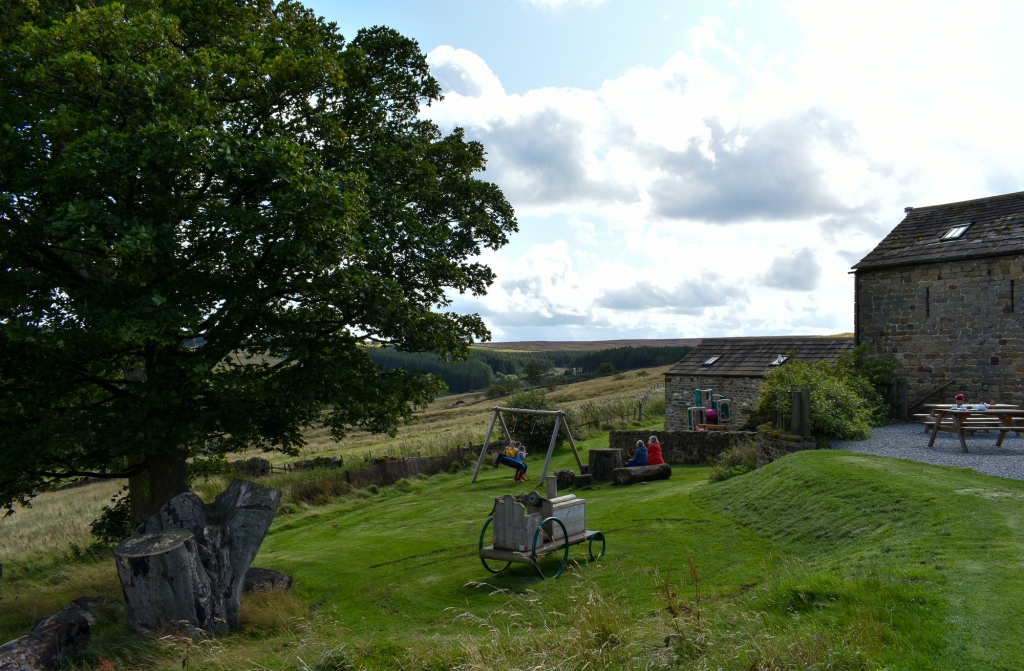
We enjoyed our visit. If you’re intending to eat from the varied and appetising menu, you’ll need a longer stay than is required to view the monument. And, with those miles of walks available, you may want to stay a few hours to appreciate the local scenery. Enjoy!

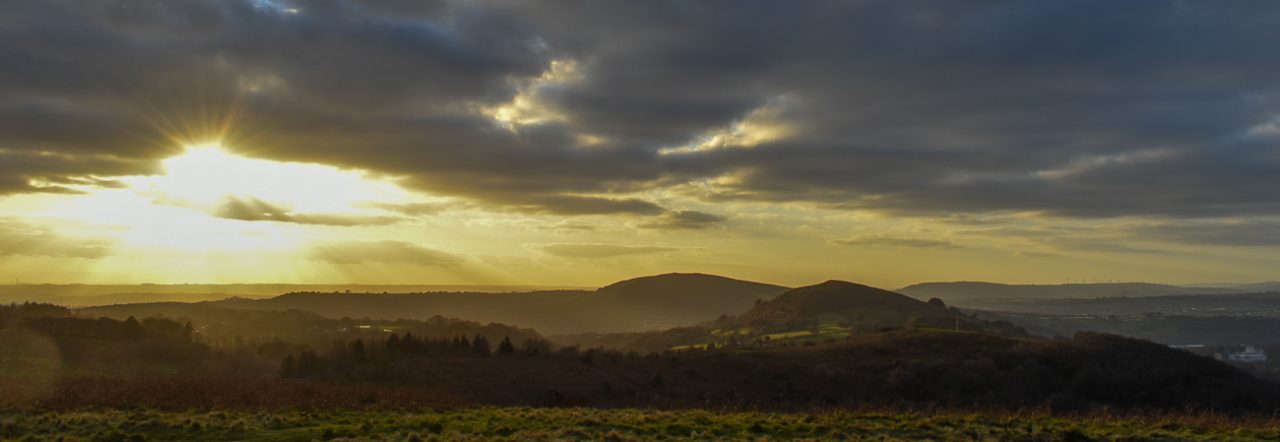

The photos are so amazing
LikeLiked by 1 person
Thank you, Zita. It’s always good to know when your efforts are appreciated.
LikeLike
Very cool. We went to Avebury, West Kennet Long Barrow, and Stonehenge (which was abSOULutely phenomenal!), plus, Glastonbury (Abbey, Tor, and Chalice Well) last July. I am writing a blog about our experiences, but haven’t posted all yet—only Ireland post so far. Reading through this has me excited to return! ❤️🦋🌀🍀
LikeLiked by 1 person
It’s difficult when you visit a few places in a row to get the info out there. I’ve recently returned from a trip to the Gower in Wales and I’m keen to get that posted, but life tends to get in the way, doesn’ t it, Sheila?
Not managed Avebury or Stonhenge yet, although we’re not far from there. Went to Glastonbury a few years ago, before I started posting my travels on the website. Interesting place.
Glad this post has excited you.
LikeLiked by 1 person
Oh, I would love to go to Wales! I so agree that it’s difficult to keep up with the posts when added travel, work, business, family, and so on are going on. 😉
LikeLiked by 1 person
And then there’s the writing to do, too!
LikeLiked by 1 person
When did you visit there? Looks very bright and sunny for this time of the year.
LikeLiked by 1 person
As mentioned in the post, Asit, it was mid August. I didn’t get round to making the post until now due to other commitments, and the fact my PC died (new hard drive fitted) at a crucial moment. There’ll be more of these posts on visits to various places as I get to them, but I’ll always try to include the month of the visit when I post them.
We encountered sunshine, grey skies, a sudden squally shower and sunny intervals – that’s a summer’s day in UK.
LikeLiked by 1 person
Sir I need to discuss a word. Can I have your email address, please..
LikeLike
Best way to contact me is through the ‘Contact’ tab at the top of the website, on the home page.
LikeLiked by 1 person
It looks an interesting site…but about as far removed from authentic as imagination could build it 🙂
LikeLiked by 1 person
They’re upfront about it’s date of construction, Sue, so no surprises for visitors once they arrive. But, I agree that calling it the ‘Druid’s Temple’ as a bare statement could mislead some people. It’s one of the reasons I posted this piece. The chances of someone coming across this place by ‘accident’ are extremely rare because it’s way off every beaten track. Even my brother, who lives quite close and had been here before, had difficulty finding it again!
I don’t think any of these follies was ever intended to fool people into thinking they were authentic. Mostly, they were vanity projects by wealthy landowners who wanted to impress their guests with their ‘wild’ imaginations.
It’s mostly interesting for what it is, rather than what it pretends to be, I think.
LikeLike
I agree, Stuart, and have visited a number of these follies…as well several modern stone circles, mainly designed as municipal art. As curiosities and as a small insight into the mind of the times, though, they are interesting places to visit.
LikeLiked by 1 person
An entertainment, rather than an education visit, I think.
LikeLike
Though we learn something about th eminds of thse who lived there even so.
LikeLiked by 1 person